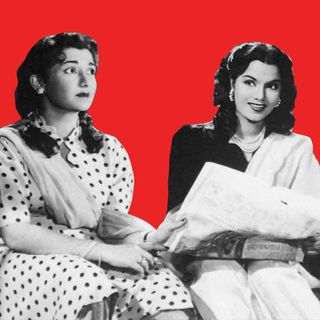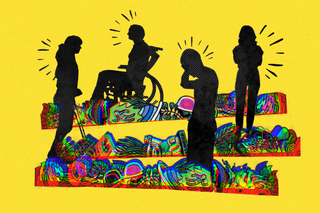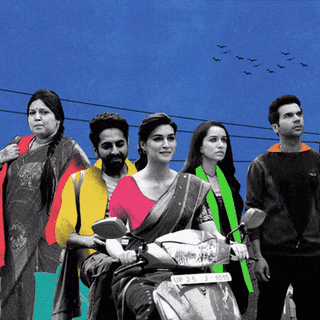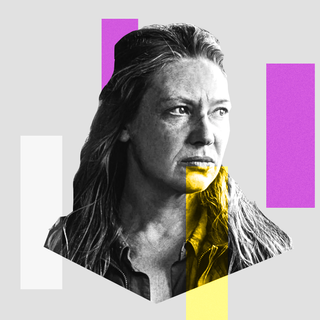
Lollapalooza’s Inadequate Accessibility Facilities Show the Need For Disability‑First Planning
Lollapalooza India’s accessibility facilities shows the need for disability-first design — not only in festivals, but in all spheres of life.

When Nu Misra went to Lollapalooza India, their disability was brought to the center-stage immediately. The “special needs” entrance, at a distance from the main festival, also served as the men’s; wheelchair users were provided with ramps and an elevated platform but no safe way to reach it over inhospitable terrain; and a PWD (people with disabilities) counter that, according to Misra, was understaffed and untrained. The organizers of the festival had, however, set up a “wall of inclusion”—a well-intentioned, albeit misguided, attempt at mainstreaming accessibility.
Misra, the founder of UN-recognised Revival India, has been physically disabled for twenty years. In daily life, they use a crutch but for the festival, decided to trade it for a wheelchair, already anticipating a chaotic event.
The Chicago-originated Lollapalooza music festival had its first Asian debut in 2023 at Mahalaxmi Race Course in Mumbai. The Indian version of the festival had similar policies regarding people with disabilities as its American counterpart — service animals were allowed in the venue and guests could email organizers informing them of their needs pertaining to accessibility. However, as per Misra’s account, the use of personal motorized vehicles was prohibited, and transportation to and from the festival was scarce apart from a few shuttles. Although promotional material for Lollapalooza India stated that a “specially-equipped team” for the physically disabled and visually- and hearing-impaired would be available to take them through different festival zones, this didn’t translate to reality. Misra recalls only one staff member at the PWD booth. “It’s a perfect example of token wokeness,” they said.
Regardless of how tangible an individual’s disability is, a lack of understanding of what disability is by the abled population is detrimental to a disabled person’s experience — not only in professional or educational environments, but also in their social life. Music festivals like Lollapalooza are only a microcosm for how disability is accommodated — rather than centered — in most spheres of life.
Related on The Swaddle:
Why We Expect People With Invisible Disabilities To Learn To Act ‘Normal’
This speaks to how the public imagination when it comes to disability ends with a person in a wheelchair— yet, this is only skimming the surface. The CDC defines disability as “any condition of the body or mind (impairment) that makes it more difficult for the person with the condition to do certain activities (activity limitation) and interact with the world around them (participation restriction),” and this includes both physical conditions and neurodivergence. While those with outwardly visible disabilities—such as Down syndrome, Cerebral Palsy, or other mobility disorders—might be easier to recognize, non-visible disabilities (NVDs) are often overlooked. Examples of neurodivergence include developmental or learning disorders like Autism, ADHD, and dyslexia. In the mainstream, people with NVDs can pass as able-bodied in daily life.
But ableism colors how those with all disabilities, both visible and non-visible, are viewed. “Once you’re identified as disabled,” said Misra, “you receive one of two responses from opposite ends of the spectrum: extreme hand-holding or extreme negligence.” For those with NVDs, recognition and self-identification is a tough pill to swallow—there is a social stigma that comes with using the label and an additional layer of scrutiny from others. Those with heightened sensory sensitivity, attention-deficit, and hyperactivity are seen as ‘troublesome’ in school and work, both environments designed primarily for neurotypical people. It is no coincidence that low self-esteem, eating disorders, and depressions are found in higher numbers in the neurodivergent populations.
“We’re made to feel guilty because we’re dependent,” shared Misra, recalling how they were effectively stranded in the middle of the festival grounds. “I went to Lollapalooza because I was invited — normally I don’t go to events like this. I know how cumbersome and chaotic they can be, on top of not being mobility friendly. Plus: sensory overload.” The dedicated team that the Lollapalooza website promised was nowhere to be found, and the little assistance that Misra did receive was tinged with condescension and unease. This oversight in disability accessibility is not limited to LollaIndia—a 2019 poster titled “Most Disability-Friendly Festivals” in the UK listed a wealth of wheelchair amenities but a dearth of resources for neurodivergent attendees. A Twenty One Pilots performance in 2016 had lanyards with sunflowers identifying people with NVDs, but lacked designated quiet spaces for those in sensory overwhelm. The limited inclusion of disabled artists, as well, is an issue—an overwhelming number chose not to disclose their NVDs, and those with visible disabilities have enormous difficulties even finding adequate teachers.
Related on The Swaddle:
How Society’s Fixation on Independence as a Universal Goal Excludes Disabled, Chronically Ill People
While disability-first planning already exists, such as in Chase Park festival, a majority of disability-friendly equipment is unaffordable to the very people they’re intended for, and the focus is instead on rehabilitating disabled people back to “normal.” As one disabled writer puts it: “The stigma surrounding my disability has hindered me just as much as, if not more than, my disability itself.” The continued exclusion (mental and physical) of disabled people from spaces is the first step in creating a hostile world— not to mention the fact that it contributes to an added ‘mental load’ of advocating for accessibility. “We are individually burdened with something that should be a collective responsibility” writes Corin, a disabled PhD student at UBC. Diverse bodies generate alternative understandings of the built world, and the onus is on all of us, abled or not, to ensure that these alternative understandings are the ones that are normalized.
Fundamentally, the way festivals like Lollapalooza and its contemporaries are designed are unjust for disabled individuals. Therefore, a major component of “design justice,” defined as an approach to design aimed explicitly to “challenge rather than reproduce, structural inequalities,” are community-led practices. It focuses on the intersectionality of disability, and how universalist design principles and practices erase those who are disadvantaged to the nth degree under the “matrix of domination.” This injustice is not only experienced by those visibly disabled—even those whose conditions fall outside of the traditionally accepted definitions of disability are affected. Sneha, a diabetic attending Lollapalooza, was unable to take their medication and their power bars—necessary to regulate hypoglycemic cycles—inside the event. They were harassed by multiple security agents, who begrudgingly allowed Sneha access to their vital medication only after external verification. “No place can be fully accessible to physical, mental, and neuropsychological issues. The only way to get it right is to create provisions for the needs of the people,” Sneha shared, adding that “having wheelchair accessible areas or sign translators, and putting up banners that disclaim ‘lights can trigger epilepsy’ cannot be enough to include people in a real sense.”
It is, therefore, vital that community voices are heard in the planning of not only one-time events, but spaces and institutions in general. Reframing what accessibility and availability mean are vital in recognizing the rights of disabled individuals. “It’s not just for disabled people; abled people also deserve to feel safe and secure, and having the option to deal with sensory overload or fatigue is a part of that,” Misra emphasized, adding that the inclusion of women—especially queer, neurodivergent women—and non-normative presenting disabled people would enable a more intersectional approach to disability-first planning.
Akankshya Bahinipaty writes about the intersection of gender, queerness, and race, especially in the South Asian context. Her background in political science and communication have shaped her past multimedia and broadcasting experience, and also her interest in current events.
Related


Why Bollywood Moved Away From Urban Romances in Favor of Small‑Town Ones
